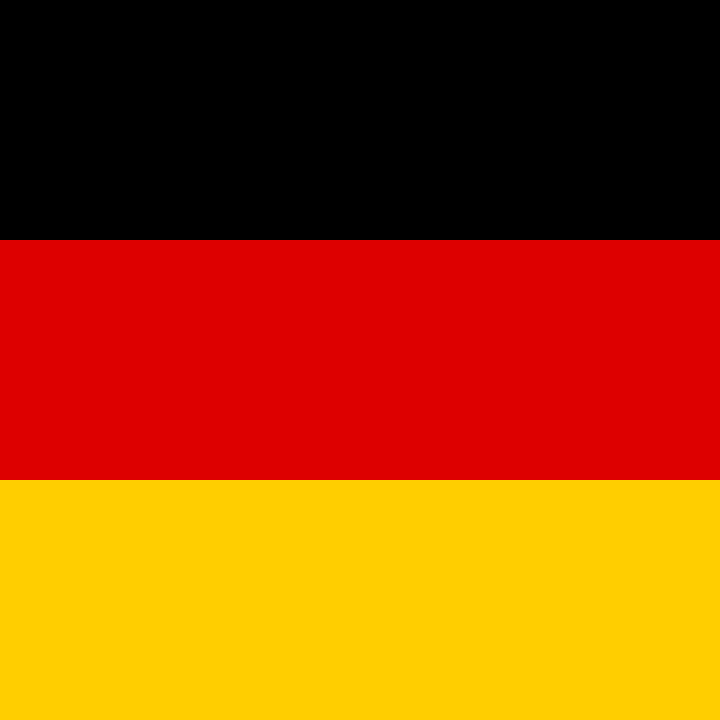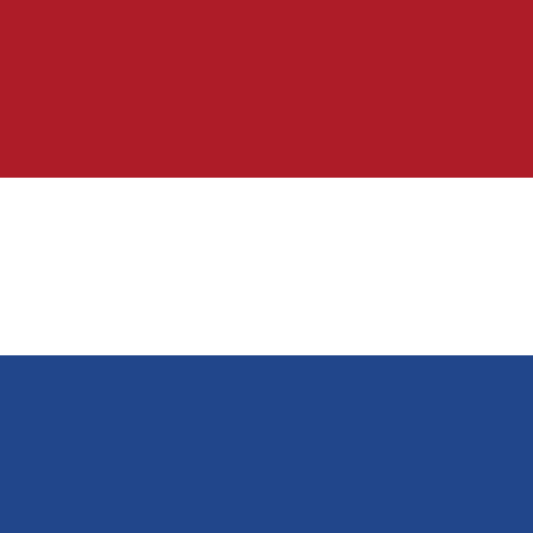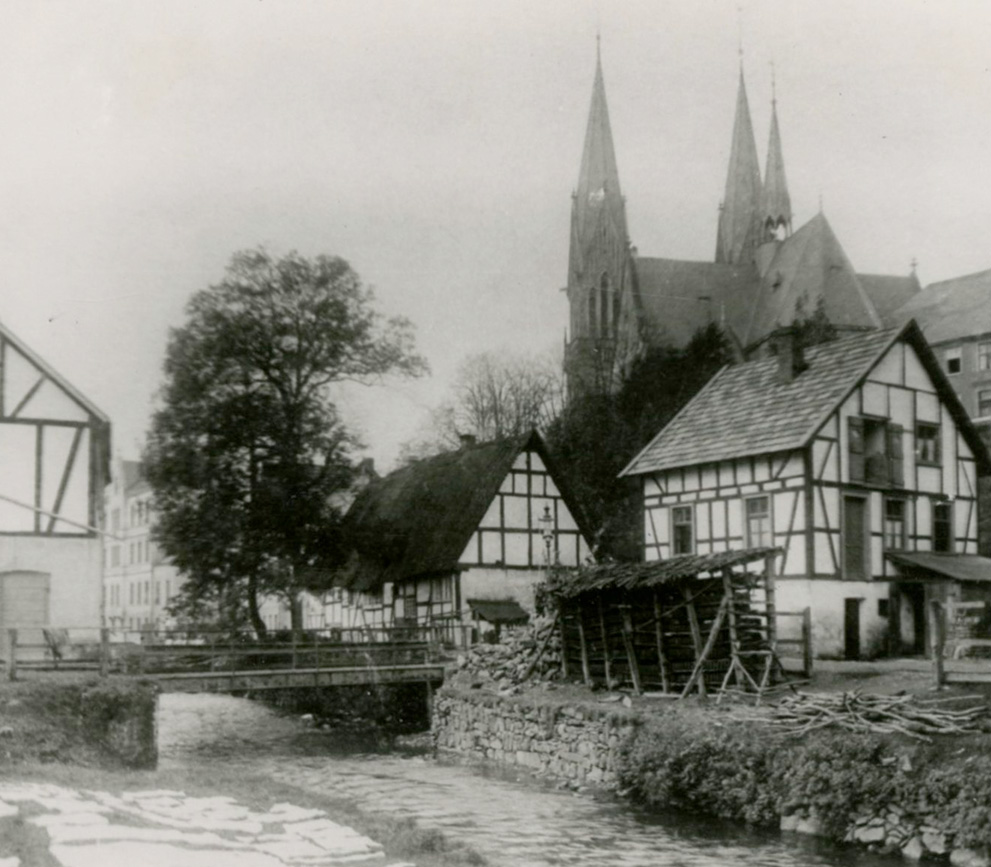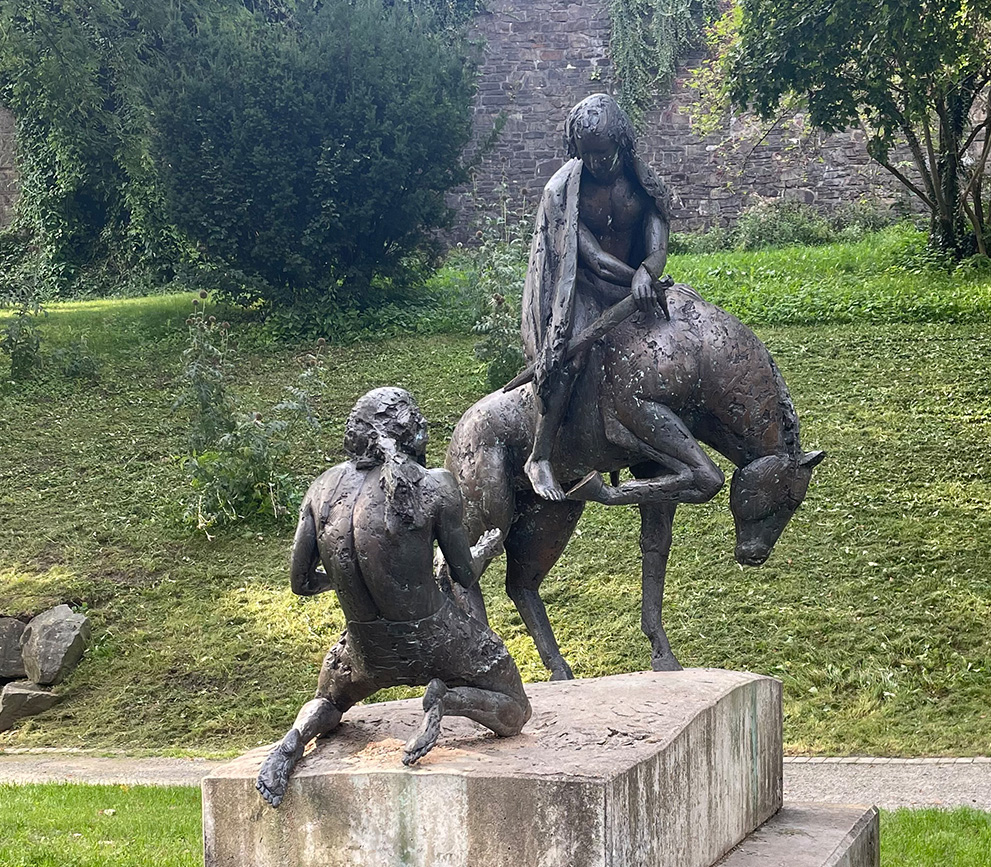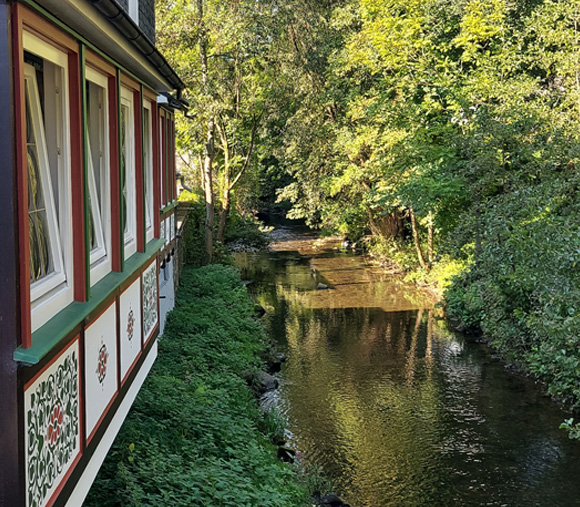
- Audio-Führung
starten - Hörspiel
für Kinder - Audio-
Führung für
Sehgeschädigte
11The Olpe and statue of Saint Martin
The path beneath the town wall in Weierhohl runs alongside a stream to which the town owes its name: the Olpe.
There is some dispute as to when the river was named Olpe. The common understanding is that this is the case where the Altenkleusheimer Bach and the Rehringhauser Bach meet between Stachelau and Lütringhausen. It also flows underground through the town for a few kilometres, in the area around Caritas in Weierhohl, Kurkölner Platz and several commercial buildings in the centre. Near the former bus station, the Olpe ultimately flows into the Biggesee at an altitude of 309 metres, which in turn rises in the Wenden district of Römershagen and flows into the upper lake of the Biggesee reservoir a few hundred metres beyond where they meet.
Linguists trace the name Olpe back to “Ol-apa”, which is interpreted to mean “brook in wet meadowland”.
Shortly after World War II, a large stretch of the Olpe was channelled and only restored to its natural state from the mid-1980s onwards, which has led to a recovery of its flora and fauna. A more extensive opening of the estuary into the Biggesee is planned as part of the urban development concept for the area around the former railway station.
The Saint Martin statue in Weierhohl is one of Olpe’s more recent sculptures. This representation of Olpe’s patron saint was created by the artist Bärbel Dieckmann, originally from Bielefeld, cast in bronze and inaugurated on Saint Martin’s Day, 11 November 2007. It shows Saint Martin dividing his cloak, probably the best-known episode from his life.
Overview of points of interest